Culture Vulture

This was a term coined in the 1980s and much in vogue. It was meant to describe those who had interest in cultural activities, viz. organisers, sponsors, patrons or performers. I even had a column going by the same title, in a popular Delhi city magazine called First City, run by a debonair Bharat Kapoor.
Vulture is also a foul-looking bird of prey. Hence the term in culture field also indicated living off others or dining out of others’ work or labour. It was used in light jest by those in society who thought those working in cultural field were vultures! Had nothing better to do but dress up and show up at exhibitions or halls. So, the term had both positive and negative connotations. Add humourous.
Baroda or Vadodara (on the banks of river Vishwamitri, where Vattvriksh or vadd/ Banyan tree grew in abundance) is the cultural capital of Gujarat and its second largest city. It is often called the Sanskar Nagari. Who put it on the world map? Maharaja Sayajirao Gaekwad III, of course. At his wedding, in 1883, a pair of devadasis danced! The story runs thus: No suitable bride could be found in entire Kingdom, whose horoscope matched the king’s. Emissaries were sent far and wide and lo behold! In Tanjore – of all the places (where’s Baroda and where’s Tanjore? 1,600 km away) – was found princess Chimnabai , with whom, by way of royal dowry, two learned dancers were sent as entertainers – devadasis Gowri and Kantimathi. This is how Bharatanatyam stepped into the west and rest of India! 1880s. Delhi was a little dusty village then. Bombay was the big port city. Kolkata was the capital of India under British India, then.
Upon getting independence in 1947, most princely kingdoms were made to join the union of India. Some enlightened Maharajas like those of Mysore and Baroda donated some of their buildings and structures, outside the palace. And the MSU was born: First, its music college was in the elephant stables! Later, given royal buildings the country’s largest university in West India, named after Maharaja Sayajirao University (MSU), came up. It was the first university to offer dance, music, painting, drama at BA level. Those days BA had more value and meaning than today’s PhDs.
Raja Ravi Varma studio in Baroda Palace ground
My father Mohan Khokar was the Founder-Head of the MSU Dance Dept. in 1949/50. At his job interview, he curtly told Hamsa Mehta, the then Chancellor, to increase his salary by Rs 50 (from Rs.300 offered; that amount in 1950 is akin to professor’s salary today of three lakhs. Just zeros have been added not necessarily quality of teaching!) else, why should he leave the comfort of a home in Punjab and or work in Madras to come to this dusty, little non-descript town? Good logic and they agreed; for then the university was nascent, not known and had no housing or accommodation for staff/faculty. For many years we stayed in Gajar Hall then 53, Alkapuri. It still stands. He was selected hands down as he was the only candidate who knew theory and practice of Indian dance; was already an established national name, writing and speaking in English (Gujarat then, like now, was not so conversant with English) and was willing to shift, when others from Bombay or Pune were not. Additionally, he was Uday Shankar mould under Zohra Segal; Kalakshetra’s first male student from North and knew Bharatanatyam. Kathak he had learnt in Punjab’s capital Lahore from doyens of the Punjab Gharana. Yes, there was one such and even modern day Kathak dancers may not perhaps know of it. Pt. Pyarelal and Sohanlal were the chief teachers after Ustad Ashiq Hussain. Mohan Khokar set the syllabus which is in use to date. Need more be said? Yes, truly a pioneer. Next year is his centenary year, let’s wait and watch what Baroda/ MSU has for its dance doyen.
I was born there, in Baroda. This month, on the 29th. An invisible birthday. Damayanti Joshi, the Kathak doyenne was the first to visit mother in the Shanta Devi hospital, now a mall. She told mother: I will teach him Kathak. This when I was just a few hours old! Mother said, “You teach him Kathak I will teach Bharatanatyam.” Lo ji, before I could learn to crawl or walk they had decided me to dance. When such stalwarts bless, no wonder my name is Ashish and I’m in dance field. Father was upset I was born bang in middle of his class time at university so said he will come see me evening. He came with a pen. Told you my fate was sealed within few hours of my birth. I was also the third child syndrome and both the parents wished for a girl child, after having had two boys. Alas! I was perhaps a disappointment of sorts. That’s why I kept long hair most of my life, so they felt close to a having a girl child! Beti badao beti padao andolan/movement started long ago, in Baroda itself!
My school – BVB, Delhi- principal Dr MP Chhaya, hails from Baroda too and is another main pillar in my growth story. He encouraged me to take to the arts and let me keep long hair to dance in school productions as often I was selected for mythological roles like Krishna.
Annual Baroda dance festival…
Wherever I am, New Delhi or New York, I return to Baroda at least twice a year; once in February to attend one of the major dance festivals we helped Parulben Shah put up for many years by suggesting best artistes and content (all ladies are bens in Gujarat and all guys are bhai; now you know why the PM – who was also an MP of Baroda and three term CM of Gujarat – often starts his speeches with Bhaiyon Aur Bhehno!) and then I return in July for Guru Purnima as my guru’s set-up is there and I’m in charge, a trustee.
Parul ben is an ex-student of the dance dept. She came to it in the 1960s and never left! First as a diploma student then degree. Then she taught here and spent four decades in the same building. Imagine! Her life is in 5km range from home to university. 50 years like that. Wow! Though she has travelled much in service of dance, her life remains Baroda bound. And she has contributed much to dance culture of Baroda. This Nritya Parva festival celebrates the memory of her guru Anjali Hora nee Mehr. Anjali Ben took over the dance department after Mohan Khokar was invited to Delhi to join the Education Ministry as OSD. Then he was placed at the Sangeet Natak Akademi. He was on loan from MSU, a loan that never got to return! I’ve many letters Anjali ben weekly wrote to father, asking how to continue running the department and other academic questions. They were good friends until politics of pesky people entered and created misunderstandings. India!
Dr Parul Shah
Parul ben is Anjali ben’s shishya indeed and dedicated this year’s festival to three: Prof Mary Alice Brennan “Buff”, a close friend from Madison, Wi, USA. Birju Maharaj the great and my mother guru MK Saroja , who also taught Bharatanatyam to first batches of students in Baroda like Pratibha Pandit, Nargis Katpitia, Pradip and Laksmi Valranis, among others. Certain items were taught by her Nattuvanar Kubernath Tanjorekar, father employed at the MSU. He was also instrumental in bringing Pt Sundarlal Gangani to MSU. The gurus and nattuvanars were thus valued and gainfully employed. Their children and grandchildren continue to benefit thanks to the vision of one man, Mohan Khokar.
In this visit, I met two interesting characters. One an 84 year-old, suited- booted and shining like a freshly-minted Dev Anand, called Dhiru Jagjivan Das Mistry who proudly says he was my father’s student! He is an acclaimed documentary filmmaker (President’s Medal for Saath kuchh na jaega and Gujarat State Award for Kanti Shanti) besides being a jovial Kathak lover of sorts and the only time he felt sad in this three-day festival was when he saw the excellent artistes of Kathak by NadRoop group of Guru Shama Bhate from Pune and said: kash hum buddhe na hote toh ab bhi dance kar lete!
84 year old art buff Dhirubhai Jagjivan Mistry being felicitated
The other interesting person I met was Vivek Kane – a man of many parts – musician, poet and a management expert. His first book ESOL published by Zen is to be out soon. His father Dr Anil Kane was VC once and the book is dedicated to him. Baroda is always on a roll.
That’s the Baroda spirit. All gung-ho. Enthusiastic and energetic. It is in the air. Traffic is democratic, people are having a party on the road, no one minds or cares, all adjust and contribute to the mess that’s any Gujarati town today. If one can drive in ABC or Ahmedabad, Baroda and C for Surat (told you English is not the major language here!) then one can drive anywhere in the world. An academic question comes to my mind: How come the same lot behaves so well abroad? There they’d have to pay a fine said one cheeky local. Fear of law is there.
I share above traits and tales as that gives the cultural scope and space of the place. Art does not function in isolation. Else, how can a reader sitting in Madras or Manipur know? Local flavour has to be brought out not just item wise description! Who cares for reviews these days when dancers or musicians can write their own on FB and Instagram posts that are much more glowing ones at that? Reviews describing items in details are passe. No one cares if hand position was okay or not. How many even teach correct dance positions, in assembly line training or workshops? Not even the dancers care to read, unless flattering, and critics are often reduced to being PR agents, mostly. Those who lend themselves to be so, are actually doing dis- service to art.
Gujarat issue of AttenDance 2003/4
Day one, Vaibhav Arekar came on stage after an hour of speeches got over. By then it was 9.30pm! The show started at 8 anyway, when publicised for 730. I could reach on time all the way from Delhi but locals couldn’t come on time. Wah! Then there was almost an hour plus of mostly inane speeches, but that’s local culture too. Give them a mike and most Indians anywhere get a magnetic attraction to it. Chipko Movement has an altogether new meaning in art field, Sundarlal Bahuguna ji.
Vaibhav Arekar is today the most mature male Bharatanatyam artiste. Praveen Kumar is another. Parshawnath is third, though a much younger one. These three are today most in demand. They are pucca and professionals and work quietly. Vaibhav mounted an excellent evening, sticking to the themes of saint poets that all know of in the region of Narsi, Namdev and Tukaram. Using abhangs as fodder came handy and registered effectively. The beauty of group work also shone but the next offering by Tagore (in Bengali) didn’t work much with this audience. Maybe a few bhadraloks sitting in hall enjoyed it or even understood it, proving once again how important language is to culture. Also, to have a solo, dialogue-oriented work to an audience past their bedtime at 10.30pm, was a no, no. The gains in the first half of the evening were washed away in the second. A pity because Vaibhav is a very watchable, wholesome artiste.
Next day speeches were mercifully shorter, and guru Shama Bhate conducted the Kathak presentation of Ritus and Holi with grace and aplomb. Her commentary enhanced the presentations. A good group always helps, and all girls were uniformly able. The opening ode to Shiva would’ve benefitted by a real male dancer as there was no centre to the item. Using same girls in all items also gives ennui to the audiences. Why can’t dance gurus and choreographers see from audience perspective? If there are five items, why put all five dancers in each item on stage? Break the monotony. Have at best two in one or three in other. Hori and Basant are happy colours, not dull brown and chocolate costumes? Pink, yellow, green would’ve uplifted the spirits more. Ponder over this! I know travelling with extra bags is not easy, but ideas weigh nothing!
On the concluding day in the morning, the IGNCA Baroda branch, under director Arupa Lahiry, hosted a discussion at the renovated Raja Ravi Varma studio (in whose honour I wore mundu/veshti from Kerala!) (While many commented the cultural symbolism was lost on most). The seminar was on dance writing with those present for the occasion. Since I was part of it, it’d not be ethical to comment either which way but the crux was realities of books, writing and documentation. The presence of Rajmata added sheen to the proceedings, which was held in an atmosphere of learning and camaraderie. Sonal Mansingh’s latest book A Zig Zag Mind was tabled and excerpts read by the host Parul Shah, followed by Arshiya Sethi conducting the proceedings with Manjari Sinha, Shama Bhate, Shilpa and yours truly stating their experiences and thoughts.
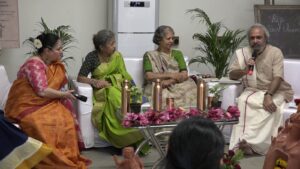
Queen of Baroda lighting inaugural lamp with SNA vice chair and author
The concluding day of the three-day festival showcased local talent Divya and her brand of Bharatanatyam. The Ashtanayikas came out convincingly, as she has an expressive face, though breaking live music to showcase two old recordings of Anjali ben, disrupted the mood. Parul Shah joined her in this part, in a cameo role. Guru shishya parampara continues even at university level. Anjali ben to Parul to Divya. Parul Shah is dedicated to dance. Period. That she puts up this festival, branding Baroda, year after year, from her own pocket, shows her love for the art. She is among the few in the city who also buys books. Her library is stacked with hundreds.
Vishal Krishna being felicitated
Vishal Krishna, the happening Kathak dancer, has something many lack – stage presence. He is also a chip of the old block. He need not dance even, his hair and colourful costumes alone dance! Benaras Gharana has uncontrolled energy on stage, some call it udhambaji. Sitara Devi represented that and so did her nephew Gopi Krishna. This grandnephew Vishal too has that androgynous look and his art has perhaps the capacity to excite some. Tabla player from Benaras regaled the audience, but I wish he knew that humility is a virtue.
Young India sees very few role models in art field today. Everything is about rewards and returns. Goodness in art starts with goodness of heart. HeART! That says all.
Ashish Khokar loves and serves Indian arts and culture selflessly, by writing, documenting, filming, archiving, celebrating and awarding. 45+books, over 5000 articles, work with 10 inter/national organisations
make his work the gold standard of the field. More details on www.attendance-india.com



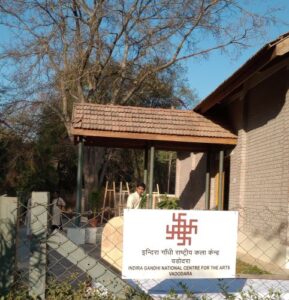
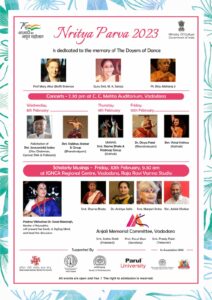
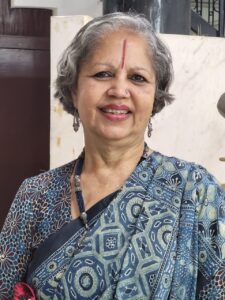

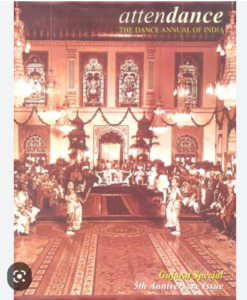
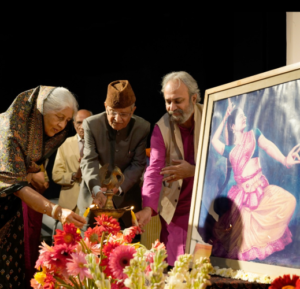

8 Comments
A very frank and hard hitting article
A learning lesson especially for the newer generation dancers
Dear Ashish,
You really took me down my memory lane. I could feel Khokersaheb in his HOD room teaching me theory of dance. A very learned professor.
What were the days ! One more point. Your command and delivery in two languages i.e.Hindi and English are superb. Regards. Dhiru Mistry
I may not agree to all of it but nevertheless I love reading your work! Tongue in cheek but at the same time true. Somebody has to write it! Am glad it’s you..:)
Wonderful ode to a City part of Badode Gaekwad Maratha State and to The event NrityaParwa.Gaekwads were always connected to Tanjore as Descendents of Shivajis Cousin Vyankoji Bhosle are still Chief Trustees of Brihadeshwara Tanjore temple.Diwan Sir TanjaworeKar T Madhavrao a deshasth marathi Brahmin was Administrator of many southern states and was so of Badode Baroda State 1878 1882 AD .His influence on Baroda & Young Sayajirao was immense. Still the Musician Dance expert family of Tanjavarkar has pride of place in huge varied cosmopolitan art culture music world emanating from Badode Baroda now Vadodara .
Namaste Aashish ji…read the article which has come out directly from the bottom of your heart. I very much appreciated the skill of putting your opinions. strongly and straight forwardly.
Very nice article !! … really enjoyed reading it and liked your observations !! … I also liked how you described the flavor of the city …. it makes for an interesting read !!
Excellent article Ashish. Although brief, it sums up the whole event well, without missing any significant points. Your criticism is to the point and very positive. That is what makes it so attractive.
Thank you for introducing me with a felicitous description. To me though, I am Ashish Khokar’s new friend and that sums up everything.
Very nice article , full of humour and wit .Yet does not miss a single point that requires to be seen .
Throughly enjoyed reading it .